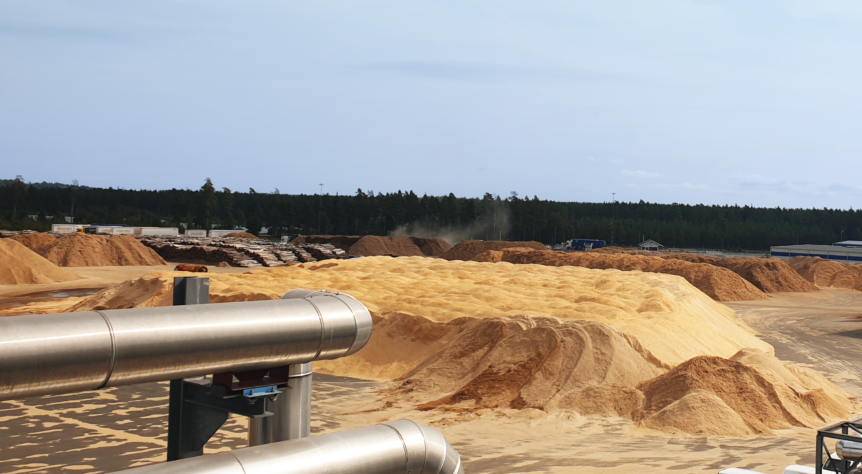In a world where climate neutrality and renewable energy sources are becoming increasingly critical, biomass stands as one of the key players in ensuring a green transition. With the European Union’s goal of 42.5% renewable energy by 2030 and climate neutrality by 2050, Poland, approximately 80% of energy still comes from fossil fuels like coal, are faced with an essential question: How can we best utilize biomass to achieve these ambitious goals without compromising our ecosystems?
One of the answers lies in shifting focus: The future of biomass is not in the forests, but in the industries, fields, and factories where waste materials are generated. To meet the EU’s renewable energy goals and address the urgent need for climate action, Poland must shift focus to sustainable biomass sources, prioritizing the use of already generated waste and by-products from primary processes.
Energy use should be the final step in biomass utilization
Biomass waste is a growing issue, especially given the large volumes generated in agriculture, forestry, and industrial processes. These wastes, such as sawdust, crop residues, engineered wood, and food processing byproducts, are often underutilized. While we cannot avoid that the continued use of biomass as primary products will always be needed, we can maximize its value by applying the cascade principle and ensuring that biomass is first utilized in higher-value applications before utilizing its energy potential.
The challenge lies in finding efficient ways to sustainable utilize biomass waste rather than letting it go to combustion. Biomass gasification is a highly energy-efficient process, already applied in the manufacturing industry today by converting locally generated low-value biogenic residual and waste streams into renewable biogas. The gas is used directly in industrial applications and replaces fossil gas, such as LPG and natural gas. In the gasification process, biochar is also generated which is today’s largest existing technology for carbon dioxide removal. Biochar Carbon Removal (BCR) is recognized by both the European Commission and the IPCC, and currently accounts for over 90% of all carbon credits sold on the voluntary market.
A potential negative emission technology
But how do we ensure that we fully utilize the potential of biomass? There are methods that help us understand and assess the impact. Meva Energy have conducted a Life Cycle Assessment (LCA) to measure the environmental impact of its biomass gasification technology. The results are promising – when combining the benefits from replacing fossil gas with biogenic renewable gas with the potential carbon sink effect of biochar, a unique opportunity appears to go beyond zero and reach even negative emissions.
The potential within Poland is huge
Poland has one of the highest biomass potentials in the EU, capable of supplying over 20% of its total energy needs. An example of this is a collaboration between IKEA Industry in Zbąszynek, Poland and Meva Energy in Sweden, which utilizes sawdust and residual fiber from MDF and chipboard in IKEA’s furniture production. By converting this waste into syngas through gasification, IKEA will replace their fossil fuels with renewable bioenergy. This partnership showcases how industrial waste streams can be transformed into local, renewable energy systems, while also producing biochar for additional environmental benefits. When compared with the carbon dioxide footprint of the Polish electricity grid, the plant is estimated to reduce emissions by approx. 20,000 tonnes of carbon dioxide per year.
The future of biomass is not in the forests, but in the industries, fields, and factories where waste materials are generated. We cannot avoid the continued use of biomass, as primary products from biomass will always be needed. What matters is how we use it, utilizing every biomass resource to its fullest potential.
Niclas Davidsson, CEO, Meva Energy

